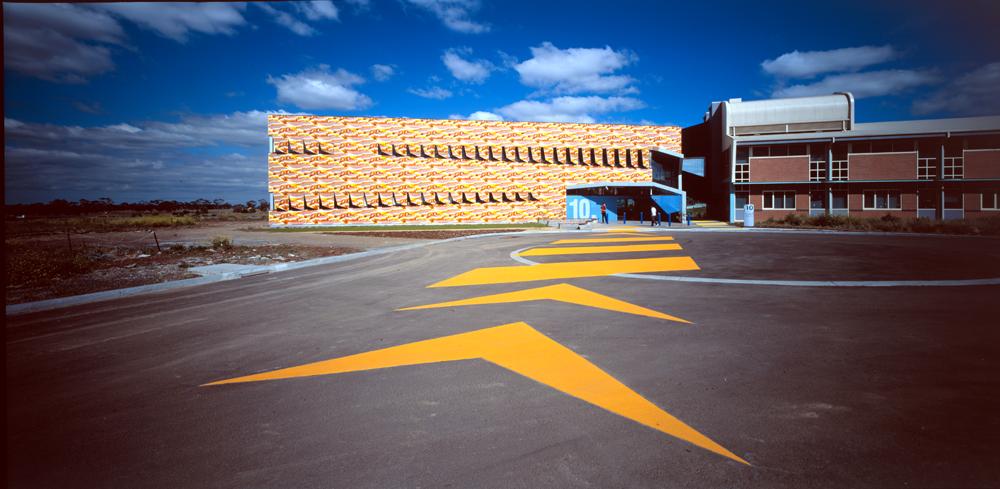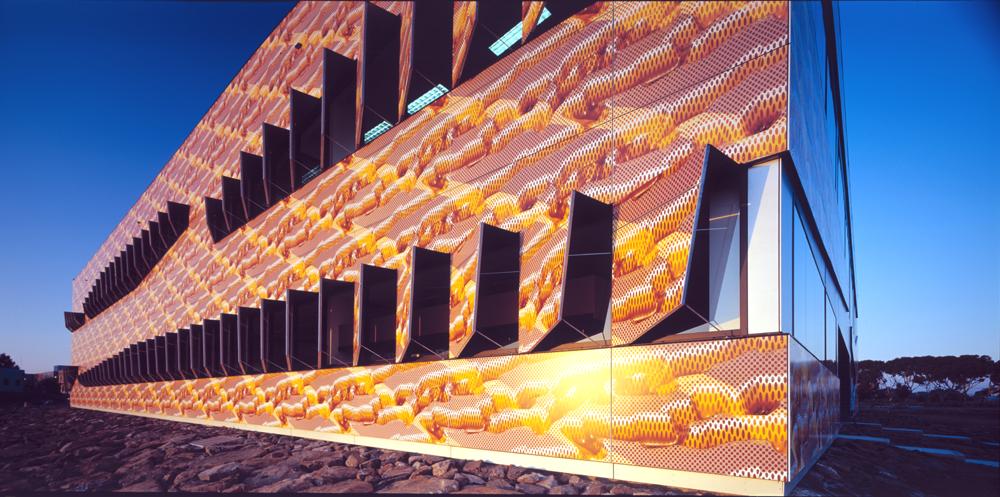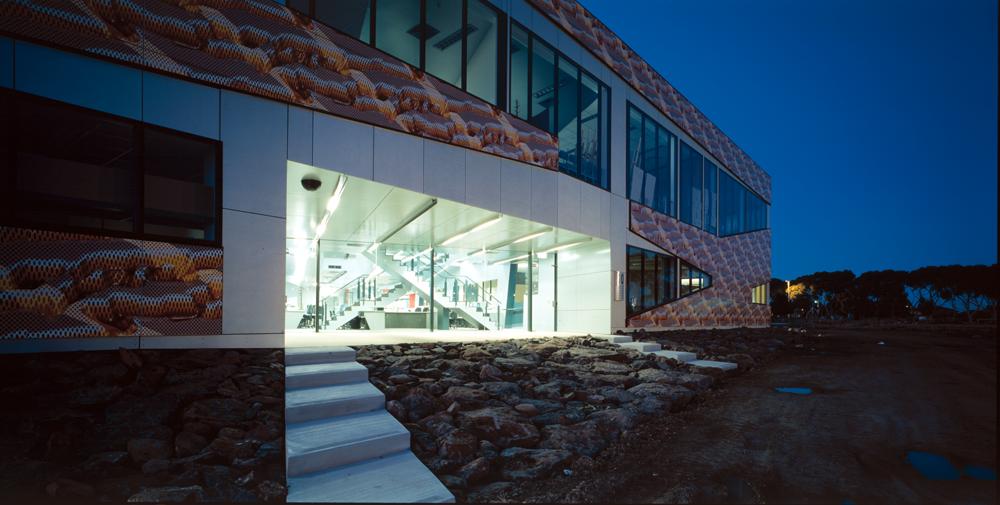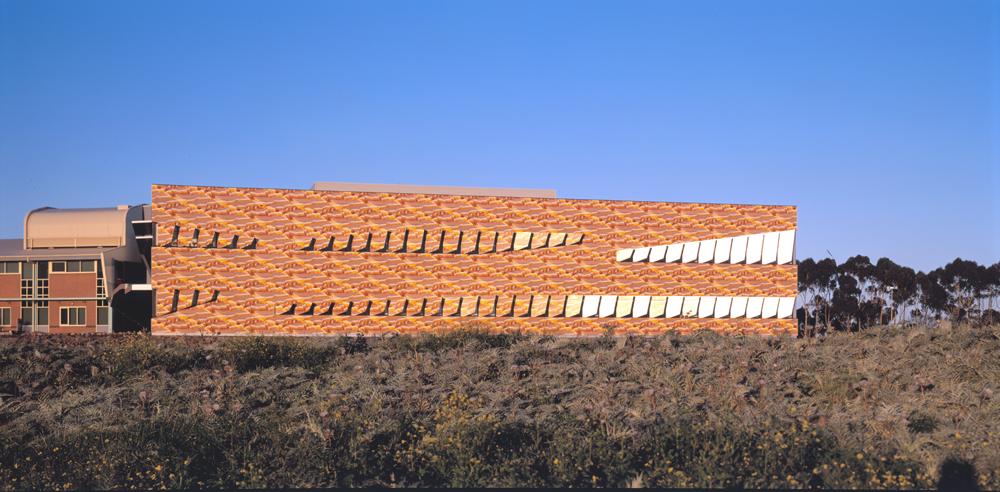
The building is located between a grassland and an established university campus. The building facades are conditioned to their local environs and orientation.
The north facade is clad in corporate silver panels in response to the formality of the existing campus architecture. The other three facades are clad in custom imaged panels to form an identity for the building that in some way expresses the work of the computer environment within.

At a distance the building sits comfortably within the landscape. Upon closer inspection the facade is made of a repeated tiled image manufactured in the computer. Rather than attempting to represent digital space, computer technology is used to make a repeating digital tile whose technique and process is wholly of the computer. Constructed in Photoshop and 3D Max, the panel appears to have depth. When tiled the golden stripes/deep furrows form a continuity that wraps the box, an artificial digital landscape.
The square plan of the building is orientated north to take advantage of passive solar design principles.

The two level building is organised in a square plan not unlike the floor plate of an office tower with a central core housing amenities and dark rooms such as a theatrette. The perimeter rooms accommodate computer laboratories, workshops, classrooms and painting studios. The diagonal of the Open Access Computer Precinct interrupts the orthogonal arrangement of plan to emphasis the different learning modes. The vertical circulation is organised within the Computer Precinct to promote movement through this space.
The buildings orientation allows windows to the north, east and west facades to be treated with appropriate sunshading. Sunshading to the east and west is designed to omit direct sunlight from the screen based environment while maintaining visual connection from inside to out. The sunshading reduces heat gain inside the building during the day.

The south face of the building has large expanses of glazing to provide deep natural lighting into the painting studios.
Sky lighting from the roof is brought down to the Computer Precinct at ground level via penetrations in the first floor plan. These penetrations act like super-troffers providing indirect natural sunlight to the central space.
Project Data:
Location: McKechnie Street, St Albans, Victoria, Australia
Type: Educational – Public
Architects: Lyons – www.lyonsarch.com.au
Year Completion: 2001
Area: 3700m2
Key Materials/Products Used:External Cladding: Compressed fibre cement (CFC) sheet with custom designed image by Lyons. Digitally (dot matrix) printed process with two part high grade external paint finish.
Awards: 2002 Australian Institute of Architects Victoria Architecture Medal 2002 Australian Institute of Architects William Wardell Award (Institutional)


